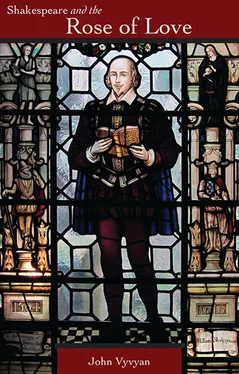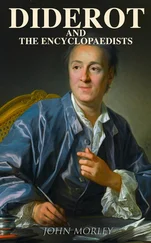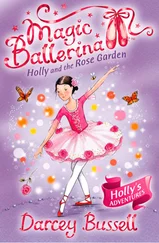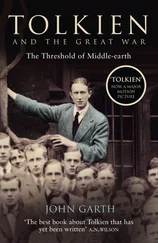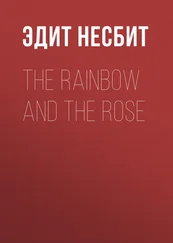It is worth while to stress that these principles of construction were not a matter of recondite knowledge in the sixteenth century. Every grammar-school boy knew them. At the beginning of a new term at Winchester, in 1565, the headmaster included the following in his speech to the boys:
Of comedies three parts are enumerated, protasis, epitasis, catastrophe. But comedies are said to be imitations of those things which are in life, as there is no one who doubts that these same parts are in life. You know that there are also three stages in diseases, augmentation, state, decline. The same thing has happened to these holidays, for they have had a beginning, a middle, and an end… *
The importance of this pattern in Shakespeare is far greater than is usually assumed. He learnt the Terentian construction at the beginning of his career, and he was still using it in his maturity. It will give us a better sense of direction if we establish this end-point first, although it will necessitate a digression. If we date Shakespeare’s earliest plays about 1590, we may look ahead twenty years to The Winter’s Tale and find the Terentian formula clearly discernible.
Structurally, The Winter’s Tale is perhaps the most fascinating of all Shakespeare’s plays. I have pointed out elsewhere †that it exhibits the tragic sequence up to the end of the third act. Then there is a turning-point, marked by the confrontation with death. And the regeneration sequence leads up to the triumph of love at the end. How these two elaborate patterns – and much else – are exactly fitted into a Terentian fabric is a constructional tour de force ; but it is only the act-plotting that concerns us now.
Act I
The opposing forces are jealousy and love. Leontes represents jealousy, Hermione love. We are shown how jealousy was unreasonably awakened. We see the death-directed intrigue that jealousy sets afoot, the objective being Hermione’s execution. And we see the counter-forces tending to reconciliation. Thus we have what Terence requires: the rational and emotional background of the conflict, clear objectives, and awakened sympathy.
Act II
There are preliminary moves by both sides. Those made by jealousy result in Hermione being sent to prison. Those made by love result in the new-born child being sent to Leontes, as an ambassadress of love. He rejects her. This concludes what the commentators call the protasis, everything leading up to the decisive struggle.
Act III
Jealousy – the side to which our sympathies are opposed – now launches its main offensive. Hermione is brought to trial, and all but condemned. We reach the blackest hour: the death of Leontes’ son, the feigned death of Hermione, and the casting away of Perdita.
Act IV
This is the counter-action of love. The fourth act, as I have tried to show, is an allegory of the healing of the tragic wound by love. It also does everything that the Terentian rules require: it ends the epitasis, by providing the conditions for the final victory, and yet stops short of it.
Act V
Harmony is established. There are no losers, in spite of the preceding conflict. The unions of love form a perfect end.
The Winter’s Tale has often been judged to be a poorly constructed play. But when we understand the principles on which Shakespeare planned it, we find it to be a miracle of construction. The ingenious use of the Terentian pattern is the least astonishing element in its design. Within this, Shakespeare has incorporated his hellward sequence and heavenward sequence, illustrated these with allegory, and made implicit a philosophy of life. But I must not digress into these complexities here; and if my readers will endure one more skeleton plot, we shall have taken our bearings, from this glance at Shakespeare’s mature work, and return to the opening of his career. Another play in which tragedy is resolved, Measure for Measure , written in 1604, will also yield to a Terentian analysis.
Act I
The background plan of the Duke of Vienna is introduced, but not elucidated fully. Then we are given a clear-cut issue. Is Claudio to live or die? Angelo has sentenced him to death. Lucio and Isabella are trying to save him. Again, reduced to stark simplicity, there are death-directed forces, and life-directed forces. Conflict is immanent, and our sympathies are engaged on the side of life.
Act II
The usual preliminary moves and counter-moves take place; Lucio and Isabella intercede, the outcome is uncertain; Angelo counters with an unacceptable proposal. Claudio’s chances seem definitely less. But the Duke’s forces have not been committed to the battle yet, and we do not doubt that they will be. So the protasis ends here.
Act III
The death-forces play their trump card, which is to win over Isabella. Now she also condemns Claudio, ‘Die, perish!’ His case looks hopeless, and he gives it up himself. But the Duke begins to pull the strings.
Act IV
The life-forces, now directed by the Duke, play their trump card, which is to bring in Mariana. She represents the active power of love. We are left convinced that they will win, but uncertain how. This ends the epitasis.
Act V
The ‘power divine’ of the Duke, supported by the love-power of Mariana pleading for life, accomplish much more than the saving of Claudio: there is an all-inclusive victory for love and life.
We may now see that, especially in the plays of resolution of tragedy, it would be difficult to over-estimate the importance of the Terentian influence – difficult, but not impossible; because there is so much more in them besides. In analysis, these plays all show a life-intrigue and a death-intrigue in conflict. The death-powers and their activities are more complex; but of the life-powers we are now in a position to establish some important constants. Life always plays its trump card in the fourth act; and it is usually the same card – love. This is exhibited dramatically by the activity and fortunes of the character who is, in her second nature, the allegorical figure either of love itself or of the beauty by which love is awakened.
Portia’s intervention turns the scale in the fourth act of The Merchant of Venice , although Shylock had seemed to be triumphant in the third. Mariana enters in the fourth act of Measure for Measure , and her pleading for life in the fifth is decisive. The fourth act of The Winter’s Tale belongs to Perdita, who is Hermione’s second self. And although The Tempest is not spun so exactly as a Terentian web, its fourth act is the ‘marriage’ of Miranda and Ferdinand, whence a new world of concord will spring. Conversely, when love is murdered, as it was by Othello, or rejected, as by Hamlet, the hero’s destruction is inevitable. This establishes the primary significance of the allegorical figure of Love, whatever her name may be, beyond equivocation: she is the trump card of life; and if the life-forces play this card, and still lose the trick, then the outcome is certain death.
In any romantic story, of course, love-interest centres on the heroine; but in these plays she has an allegorical importance as well. Her fortunes, in the epitasis of all of them, determine the outcome of life or death. She is a love-symbol. And the love-symbol, for Shakespeare, is something more than sex, passion or romance; these are parts, but their sum is not the whole. If we could discover the full significance that this figure had for Shakespeare, it would illuminate nearly all his work; because very few plays are without it. So it seems worth while to try to lift a corner of the curtain, and I propose to make this our main enquiry. Inevitably, there will be asides. Shakespeare did not invent the philosophy of love, although he shaped his borrowings into his own design; and we shall have to delve into the minds of some of his precursors.
Читать дальше
